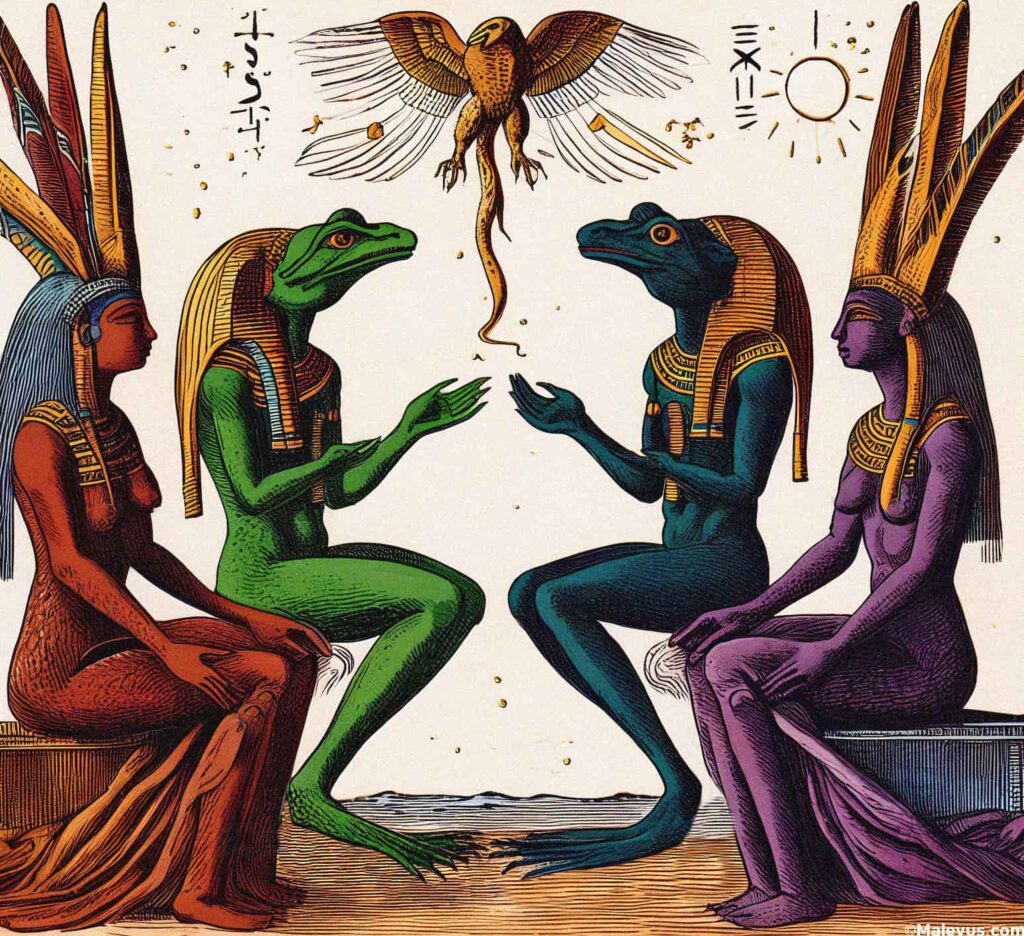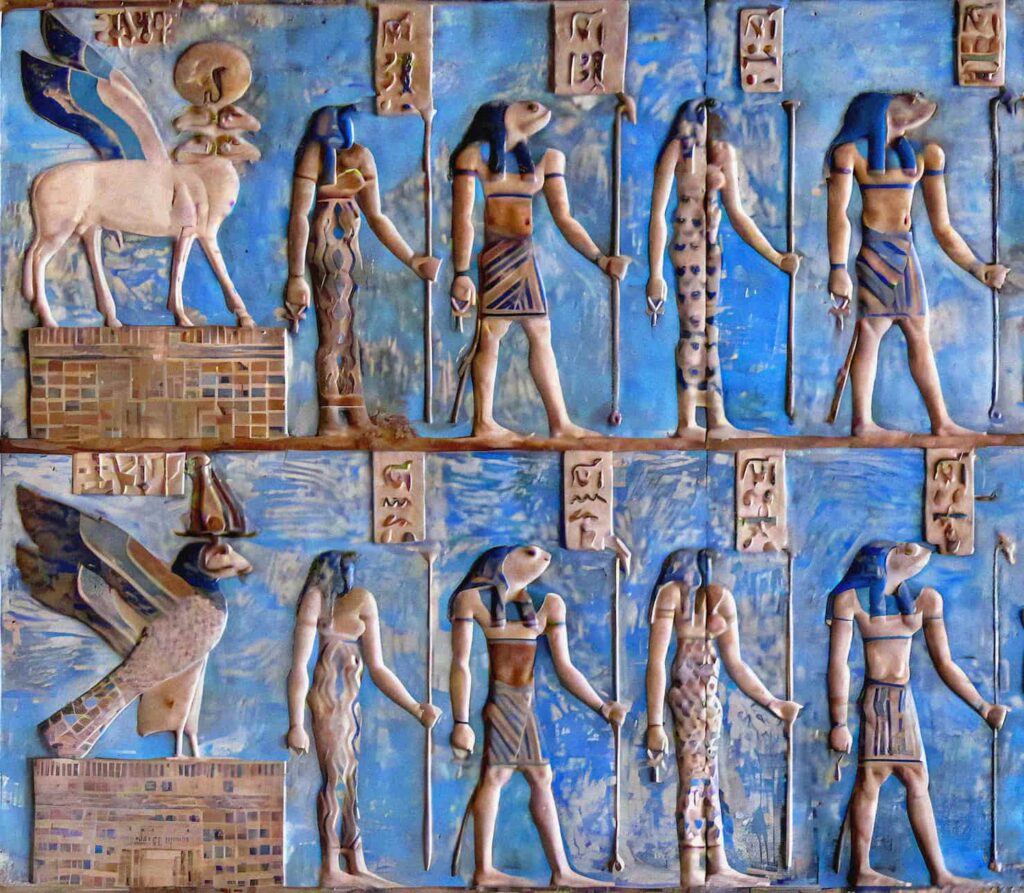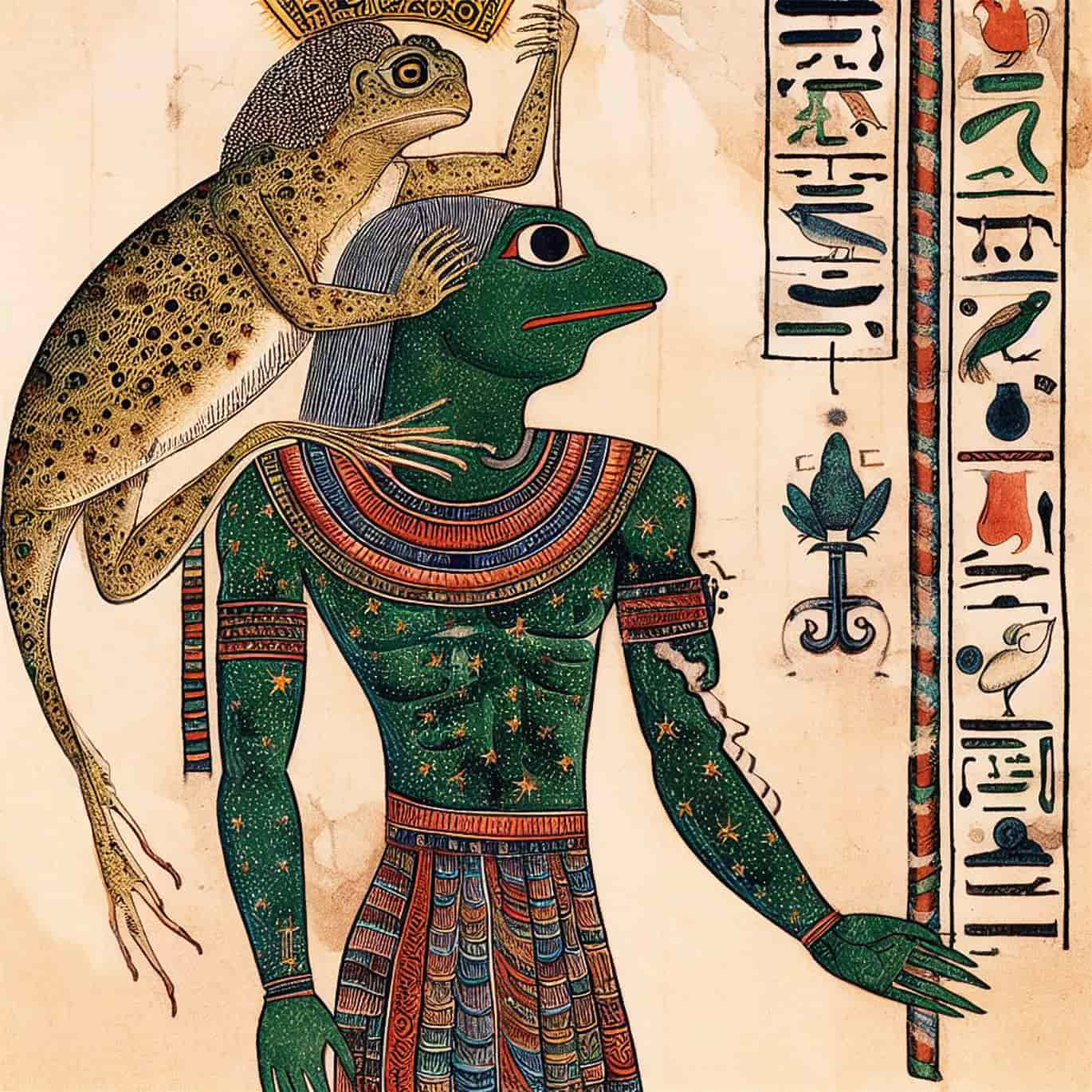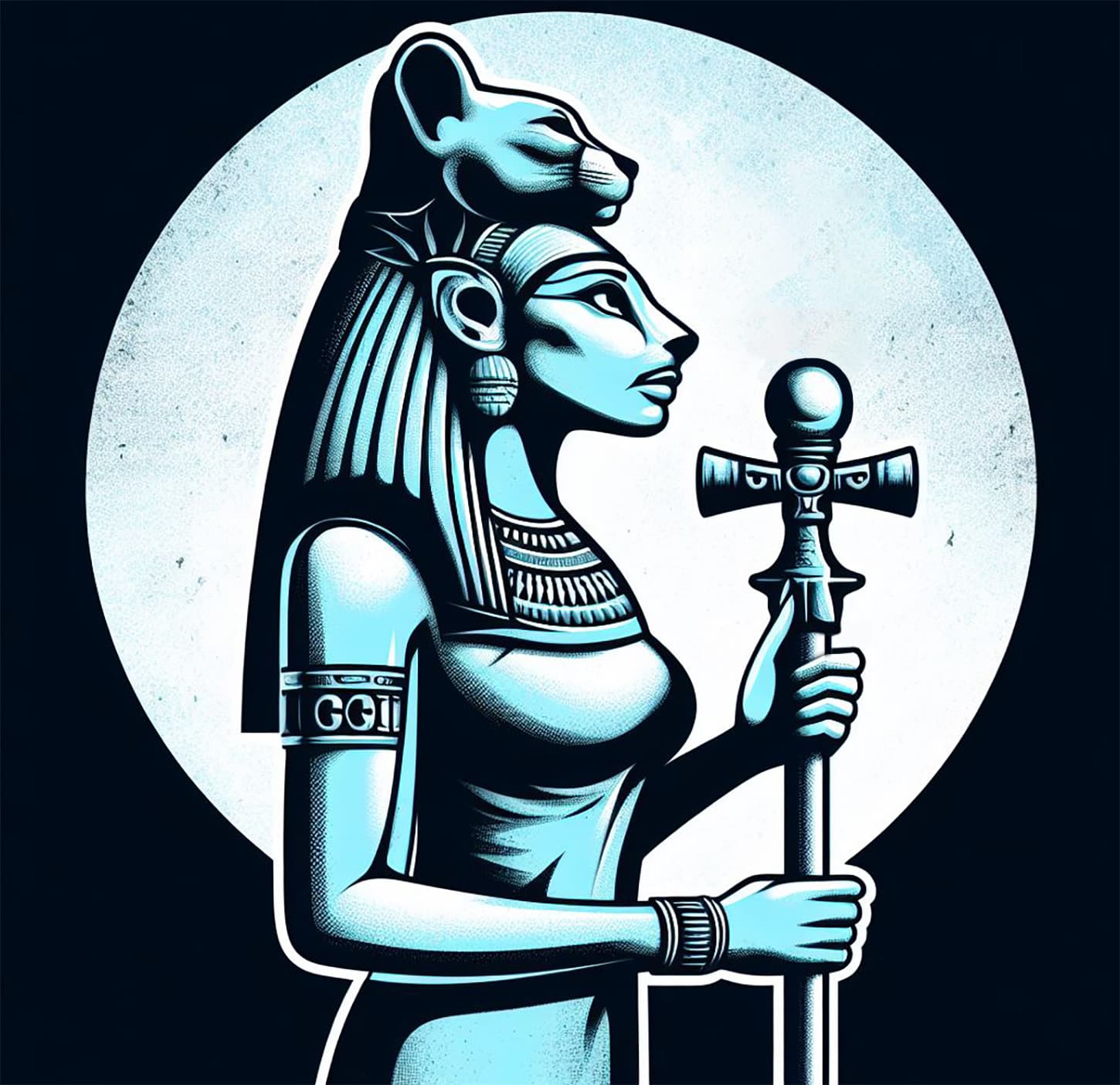In Egyptian mythology, Kek is a distinct god who represents the overarching idea of nighttime. Kek was one of the eight primordial deities, known as “Ogdoad,” worshiped in Hermopolis. His name, in Ogdoad cosmology, means “darkness.” According to German Egyptologist Heinrich Brugsch, Kek corresponds to Erebus, a figure from Greek mythology.
Historical Origin of Kek

Kek has been documented since the Middle Kingdom (2055 BC–1650 BC) as an ancient Egyptian god. Since the New Kingdom (1539–1075 BC), he formed a divine pair with his consort Kauket and, from that time, has been regarded as a primordial deity within the Ogdoad of Hermopolis, a major ancient city located in middle Egypt. In the above depiction, he is shown with a Was scepter, an Egyptian staff of hegemony and authority.
A Middle Kingdom (2040–1782 BC) explanation of Kek’s mythological connections states this:
Shu was enveloped with the life breath from the throat of the Bennu on the day Atum emerged in Heh, Nun, Kek, and Tenemu.

Symbolism of Kek
Kek was thought to be hermaphroditic since it was an abstract creature like the Hermopolitan Ogdoad couples. Kauket is the feminine variant of Kek, and she refers to his mythical wife.
Kek stands for mystery, the ethereal, and maybe even anarchy, all of which are associated with the night. Among other things, he was regarded as the bringer of light because he represented all that came before light. It was his doing that the darkness gave way to light and that the skies above “Kemet”, an ancient name of Egypt meaning “the black land,” gave birth to the sun.
As a symbol of darkness, Kek also represented the unnoticed and the unknown, and therefore chaos.
Erebus as the Greek Equivalent of Kek
Along with his partner, Kauket and Kek represented the masculine and feminine powers of darkness that covered the primordial abyss of the waters and have been compared by the Egyptologist Brugsch with the god Erebus from Greek mythology, who also personified darkness and obscurity. In Hesiod’s Theogony poem, he is the offspring of Chaos, and the father of Aether and Hemera (Day) by Nyx (Night).
What Did Kek Look Like?

Like the other three frog-headed male deities worshipped in Ogdoad—Ḥeḥ, Nāu, and Amen—Kek is always shown as a frog or as a person with a frog head. Similarly, all four goddesses are depicted with serpent heads, including his female consort Kauket.
The Hermopolitan tradition links the preference for frogs symbolizing male aspects and serpents representing female aspects in primordial deities’ iconography to ancient Egyptians observing amphibious creatures emerging from Nile mud deposits, signifying the emergence from non-being.
Kek in Egyptian Mythology
In the Circles of Duat (12 hours of night in the underworld), Wallis Budge mentions Kek as one of the four gods hiding beyond the ninth gate. Kek waits at the ninth gate in the seventh hour of the deceased’s journey through the Duat (underworld). At this point, the deceased arrives at Osiris’ concealed residence.
Theologians in Hermopolis believed that Kek was an emanation of Thoth. As an ibis-headed holy man, Thoth was the true creator of the world. The egg that contained our universe hatched in Great Hermopolis because of Thoth.
They taught that the first time he awoke within the god Nun (“Watery One”), he opened his lips, and the sound of his voice materialized into the shape of four gods and four goddesses, completing the job of creation with only his voice.
Khmounou, meaning “city of the eight,” likely refers to the eight primal and abstract gods, which may explain why Hermopolis was originally given this name. Kek may have been associated with light because the eight ancient and impersonal gods, who maintained creation via words, also used hymns to attempt to keep the sun on its merry way.
Thus, the couple were also referred to as “raiser up of the light” (Kek) and “raiser up of the night” (Kauket) because of their symbolic relationship to night and day.
Kek’s Meaning in Modern Culture
1
In the video game “World of Warcraft,” players from different factions communicate in encrypted languages. For races unable to understand each other, the widely used acronym for laughter, “LOL,” is replaced by “KEK.”
2
Since the 2010s, the term “KEK” has become a rallying cry and emblem for extremists on the far right. The term has become a largely ironic icon for far-right and neo-Nazism, particularly among young people, thanks to its usage in hilarious memes on the anonymous image-sharing community 4chan.
The initials “KEK” have been rendered as a swastika- or iron cross-like symbol and placed in a green variant of Hitler’s Germany’s “war flag” (Reichskriegsflagge), as well as in parodic versions of, say, the racist “rebel flag” of the Confederate States (“Southern Cross”), alluding, perhaps, to Nazism in 1930s Germany.
3
Pepe the Frog, another pop culture figure connected with young, far-right counterculture and the American alt-right movement, has been artificially linked to the acronym KEK because of its similarity to the ancient Egyptian frog-headed chaos god Kek.
4
On January 6, 2021, Trump supporters invaded the Capitol Building in Washington, D.C., carrying a variety of flags, including the “KEK” flag and banners portraying Pepe the Frog.
5
Elon Musk has also made several allusions to Pepe and even to Kek, but it was probably just a memetic coincidence.
References
- Budge, E. A. Wallis (1904): The Gods of the Egyptians: Or, Studies in Egyptian Mythology. Methuen & Co. s. 241, 283–286.
- (PDF) A Statuette of the God Kek at University College London | Robyn Gillam – Academia.edu



